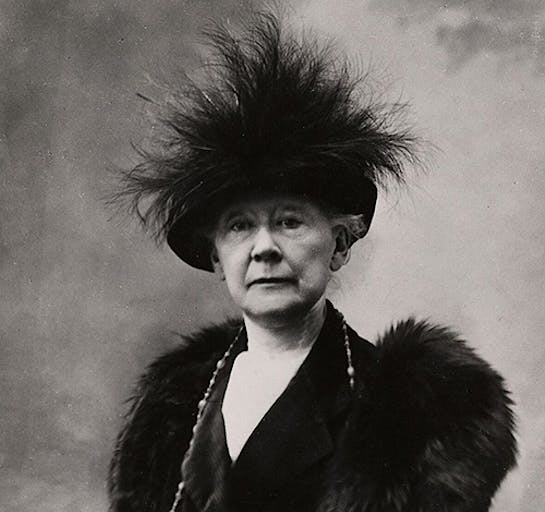Mary Cassatt
1844-1926

Mary Cassatt
1844-1926
Impressionist painter Mary Cassatt is best known for her mother and child compositions and also for her color prints, based on Japanese woodblock techniques and that combined drypoint, etching, and aquatint. From 1890, she had her own printing press at her home.
Born in 1844 in Allegheny City (now part of Pittsburgh), Pennsylvania, she was recognized by the turn of the century as one of the preeminent painters both of her native country and of France, which she made her permanent home in 1875.
She spent her childhood in Pennsylvania, and then lived with her mother in Europe from 1851 until 1858, studying in a number of cities including Paris, Parma, and Seville. She returned to study at the Pennsylvania Academy of Fine Arts from 1861 to 1865 and in 1866 went back to France. She spend much time studying art, and painted with Auguste Renoir, Alfred Sisley, and Edgar Degas. Cassatt continued to exhibit at the Salon through the mid-1870s, and attracted the attention of Edgar Degas, who invited her to join the Impressionists.
At this time she abandoned the somber palette and traditional subject matter of the Academic style in favor of the light-filled modern life compositions favored by her colleagues. She quickly adopted Impressionist techniques of applying paint rapidly from a bright palette. Cassatt developed her own subject matter, using her family members as models because she was much more confined than that of the male Impressionists who were able to spend time in cafes and paint subjects of society life. From 1879 to 1886 she was one of only three women to exhibit with the Impressionists, and the only American woman.
As the years progressed, Cassatt became increasingly involved with women's rights causes. She painted a mural for the Women's Building in the 1893 Chicago World's Exposition on the theme of "Modern Woman", and also helped organize an exhibition of pictures by Old Masters and Degas, in addition to her own works, to benefit woman suffrage in 1915.
Upon her death in 1926, Cassatt was honored by a number of memorial exhibitions, and remains one of the most acclaimed American-born artists.
Sources:
Michael David Zellman, 300 Years of American Art
Matthew Baigell, Dictionary of American Art
Charlotte Rubinstein, American Women Artists
